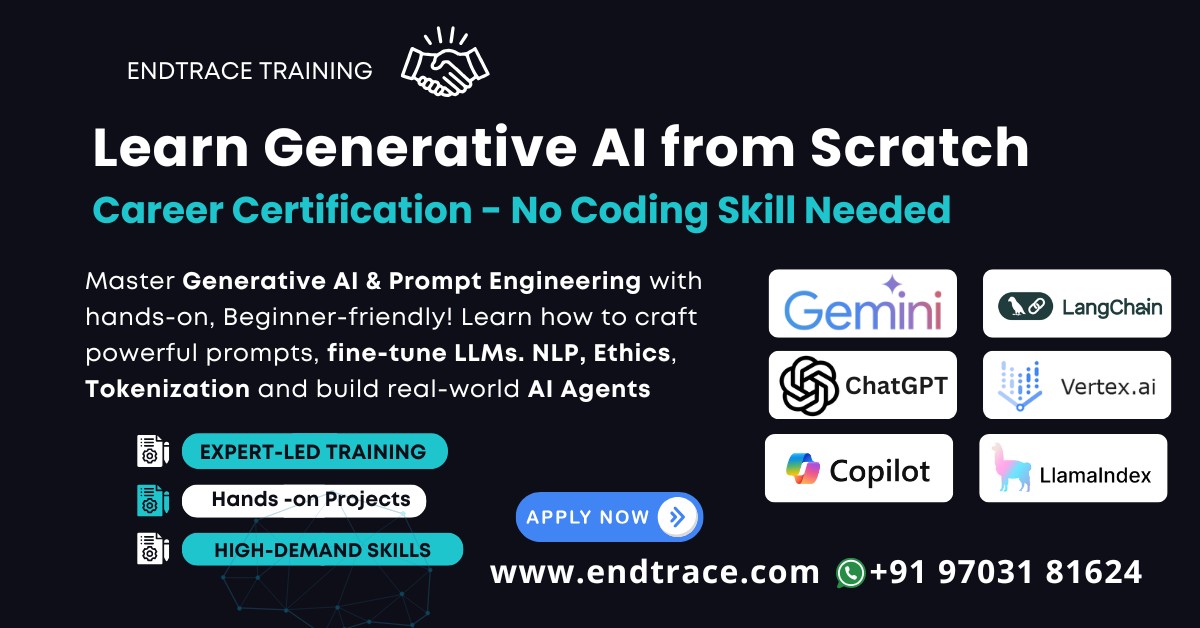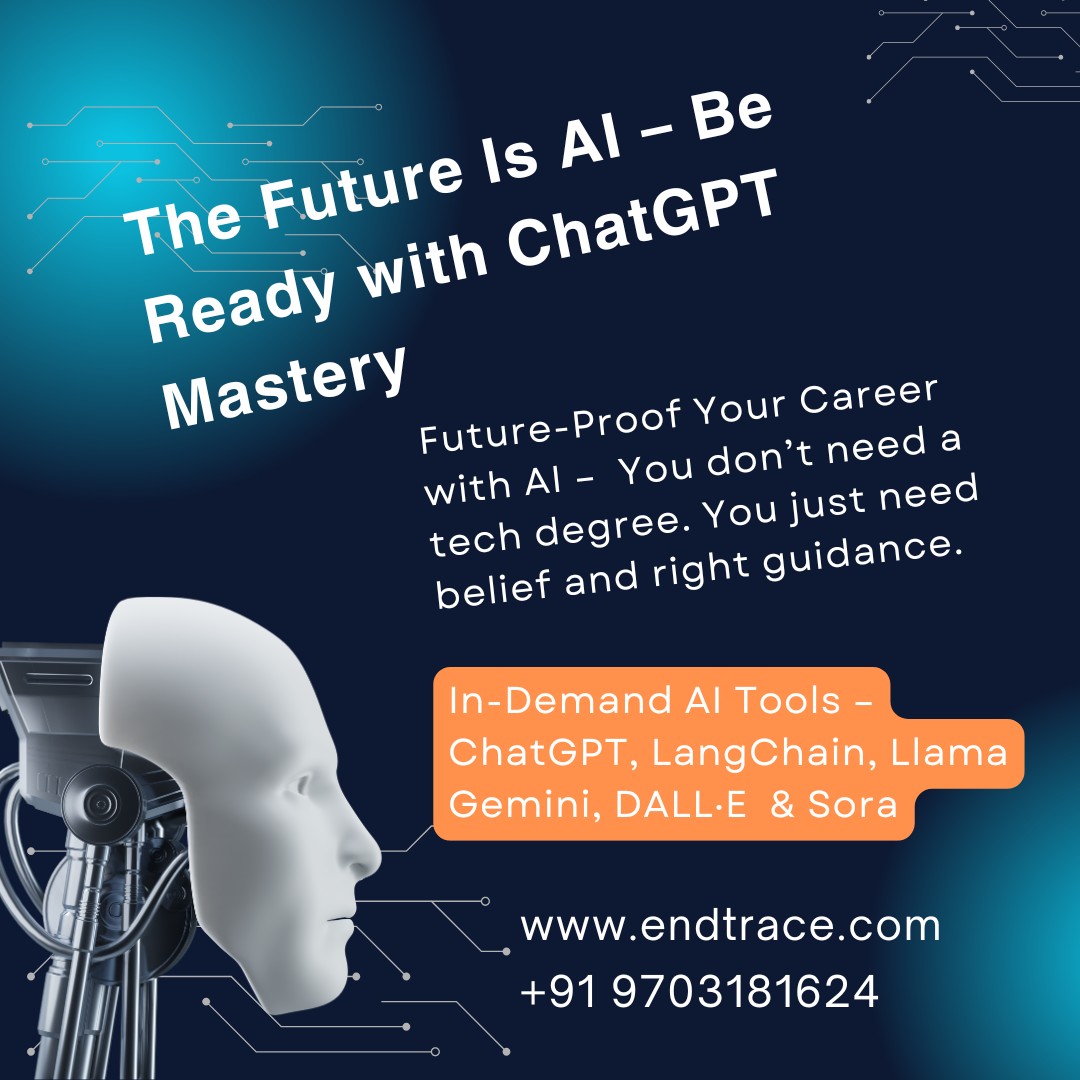Introduction
Imagine having the power to guide an AI like ChatGPT to write an entire blog, generate business ideas, answer customer questions, or even summarize complex documents—just by typing the right prompt.
Welcome to the world of mastering Prompt Engineering for ChatGPT, where your words become powerful tools that unlock the true potential of AI.
As AI continues to shape industries, those who know how to communicate with models like ChatGPT effectively are in high demand.
This article is your step-by-step companion to understanding how to control AI output through structured prompts.
From building clear instructions to applying prompt engineering best practices for ChatGPT, you’ll learn actionable techniques that transform you from a casual user to an AI prompter with real-world project experience.
By the end, you’ll not only grasp the fundamentals of prompt engineering, but also walk away equipped with practical skills to apply across content creation, automation, marketing, and more—using the world’s most powerful conversational AI.
What is Prompt Engineering?
Prompt Engineering is the art and science of crafting inputs—called prompts—that guide AI models like ChatGPT to produce accurate, relevant, and desired responses.
Instead of coding, you use well-structured natural language to instruct the model. It’s how you tell ChatGPT exactly what you want—whether it’s writing, analyzing, or generating ideas.
Importance of Prompt Engineering
- Ensures high-quality and accurate AI-generated responses.
- Saves time by reducing trial-and-error when interacting with AI.
- Helps in content creation, learning, problem-solving, and automation.
- Unlocks the hidden capabilities of ChatGPT and makes it work smarter!
Real-World Applications and Impact
Effective prompt engineering is powering innovations across industries. Content creators use it to automate blog writing.
Marketers generate ad copy in seconds. Educators build learning tools. Developers create AI-powered apps without writing code.
By mastering Prompt Engineering for ChatGPT, you position yourself at the forefront of the AI revolution—ready to solve problems, create solutions, and stand out in any field. look into Beginner-Friendly ChatGPT Projects
Essential Skills for Mastering Prompt Engineering with ChatGPT
Becoming a Prompt Engineering expert for using ChatGPT starts with understanding how this powerful AI model thinks and responds.
You’ll need a blend of technical insight, creative thinking, and strategic communication.
These skills help you guide ChatGPT toward accurate, meaningful, and context-aware outputs.
Deep Dive into ChatGPT’s Functionality
ChatGPT operates on a transformer-based architecture. It processes massive amounts of data, learning patterns, context, and human-like language.
When you type a prompt, the model predicts and generates responses based on its trained knowledge.
Understanding this architecture helps you design prompts that get better results, especially when applying prompt engineering best practices for ChatGPT.
Crafting Effective Prompts
Good prompts are clear, direct, and detailed. Instead of saying “Write a blog,” say “Write a 300-word blog post on the benefits of meditation for students, using simple language.”
The more specific and clear your prompt, the better the output. Learn to use structure, tone, and examples to guide the model efficiently.
Importance of Context and Examples
Context is everything. ChatGPT relies on how much it understands your request within a conversation. Giving background, goals, or examples in your prompt enhances its accuracy.
For example, adding a sample output or clearly stating what you want to avoid can drastically improve results. Contextual prompting is a must-have in your prompt engineering toolkit.
1. Understand How ChatGPT Works
- ChatGPT is a Generative AI model trained on vast amounts of data.
- It predicts text based on the input (prompt) provided.
- Your prompt quality directly affects the AI’s response quality.
2. Learn to Structure Effective Prompts
- Be clear and specific (avoid vague prompts).
- Provide context so AI understands your intent.
- Use examples to guide the AI’s response.
- Define expected output (e.g., “Explain in 3 bullet points”).
3. Experiment with Different Prompt Styles
- Direct instructions – “Summarize this article in 5 key points.”
- Role-based prompts – “Act as a teacher and explain photosynthesis.”
- Step-by-step guidance – “First explain what AI is, then describe its benefits.”
- Conversational prompting – “What are the latest trends in AI?”
4. Apply Prompt Engineering in Real Life
Use ChatGPT Prompt Engineering – Generative AI to:
-
Automate writing tasks (emails, essays, reports).
-
Generate creative ideas (stories, ad copies, scripts).
-
Learn new topics (history, programming, science).
-
Improve productivity (summarizing, brainstorming, problem-solving).
Understanding LLM Parameters and Their Usage
Strategies for chatGPT Parameter Tuning
One of the keys to becoming a Prompt Engineering expert for using ChatGPT lies in understanding how to fine-tune generation parameters for better control over responses.
These settings can shape the tone, creativity, and accuracy of the output, depending on your use case.
How to Adjust Parameters Based on Desired Outcomes
Prompt tuning isn’t just about writing better questions—it’s about configuring how the model behaves. For example:
- Temperature: Controls randomness. Higher values (e.g., 1.0) make responses more creative, while lower values (e.g., 0.2) make them more deterministic.
- Top-p (Nucleus Sampling): Determines the probability mass for selecting next words. Lower values (e.g., 0.7) keep responses focused.
- Top-k: Limits the number of possible next words. Setting k=50 allows selection from the top 50 most probable words.
- Frequency & Presence Penalties: Adjusts the likelihood of repeating words or introducing new ones.
- Max tokens: Sets how long the answer can be. Use it to limit or expand response length.
- Stop sequences: Helps cut off replies at the right moment to avoid unwanted content.
Mastering these settings helps you master prompt engineering of ChatGPT by producing outputs that match your goals—whether informative, concise, or conversational. ChatGPT Training for Beginners: Certified Prompt Engineer
Addressing Challenges in Prompt Engineering
As you grow on the path to becoming a Prompt Engineering expert for ChatGPT, it’s crucial to address the common challenges that can affect output quality, fairness, and reliability.
Two key areas to focus on are bias and hallucinations.
Techniques for Bias Mitigation
AI models can reflect biases present in their training data. To ensure ethical and fair responses:
- Craft Neutral Prompts: Avoid language that could imply stereotypes or subjective opinions.
- Use Role-Defined Instructions: Instruct the model to answer as a neutral assistant or expert.
- Test Across Audiences: Frame the same query in multiple ways and compare responses for consistency.
These techniques help generate balanced AI responses and build trust with users.
Preventing AI Hallucinations
Hallucinations are when AI generates incorrect or fictional information. To reduce this:
- Ask for Sources: Add phrases like “based on known data” or “include references if possible.”
- Use Contextual Prompts: Provide factual background or context within your prompt to guide the model.
- Limit Scope: Ask specific, clearly defined questions rather than open-ended ones.
These methods ensure that your outputs stay grounded in reality, especially when factual accuracy is non-negotiable.
Imagine having the ability to unlock the full potential of ChatGPT, making it work exactly as you need. Whether you’re a student, beginner, or AI enthusiast, mastering Prompt Engineering for ChatGPT can be a game-changer.
This guide will help you become a Prompt Engineering expert for ChatGPT, even if you have zero experience.
Learning Path to Generative AI
Generative AI Prompt Engineering Course and Certification
Roadmap Generative AI from scratch
how to start guide on learn ai Commerce Arts Students
Top 5 AI Courses for Commerce, Arts Students & Freshers
What is Tokenization?
Before diving into prompt engineering, it’s crucial to understand how ChatGPT processes text.
It doesn’t read words like humans do; instead, it breaks them down into smaller units called tokens.
What Are Tokens?
Tokens are the building blocks of how AI understands and generates text. A token can be a full word, part of a word, or even a punctuation mark. For example:
- The word “ChatGPT” may be split into multiple tokens.
- The phrase “Artificial Intelligence” could be broken down into “Artificial” and “Intelligence” as separate tokens.
- Smaller words like “a” or “is” are often single tokens.
Why Tokenization Matters?
- LLMs like ChatGPT have a limited context window (e.g., 4,096 tokens for GPT-4, meaning it can process only that many tokens at a time).
- Longer prompts use more tokens, which can impact the cost and efficiency of AI responses.
- Optimizing token usage helps generate faster, clearer, and more cost-effective results.
Step 1: Start with Simple Prompts
Try asking ChatGPT basic questions like:
- “What is artificial intelligence?”
- “How does ChatGPT generate text?”
Observe how ChatGPT responds and tweak your prompts for clarity.
Step 2: Refine Your Prompts for Better Output
Instead of: “Tell me about AI.”
Use: “Explain AI in simple terms with a real-world example.”
Step 3: Use Advanced Prompting Techniques
- Few-shot prompting: Provide 2-3 examples to guide AI responses.
- Chain-of-thought prompting: “Break this problem into smaller steps and solve it.”
- Conditional prompting: “If the user is a beginner, explain in simple terms. Otherwise, use technical terms.”
Common Mistakes in Prompt Engineering & How to Fix Them
Mistake: Asking vague questions like “Tell me something about history.”
Fix: Be specific: “Explain the impact of the Industrial Revolution in 5 points.”
Mistake: Not testing multiple prompts.
Fix: Try different approaches and see which one works best.
Future Scope of Prompt Engineering
With AI evolving rapidly, ChatGPT Prompt Engineering – Generative AI skills will be in high demand.
From AI-powered content creation to personalized education and automated business solutions, mastering prompt engineering can open doors to exciting career opportunities.
Final words
You don’t need a tech background to become a Prompt Engineering expert for ChatGPT. Start practicing, refine your skills, and experiment with different prompts.
The more you explore, the better you get at unlocking the hidden potential of AI.
Ready to take the first step? Try crafting a powerful prompt now and see the magic of AI in action!
Find ChatGPT Projects for beginners
Explore Real-World Generative AI Chat Agent Use-cases
Learn ChatGPT Course with Certification, Hands-on Project
Generative AI Projects for Beginners
Real-world Generative AI Projects for Students
Generative AI Projects for Best Practice using Open-Source LLMs
Download this ChatGPT, Prompt Engineering Course from Scratch
Start your AI journey today! Learn from scratch, craft AI Prompts, build and deploy AI agents. Become a certified ChatGPT – Prompt Engineer
Download Course Content!
Related Articles
Ultimate Guide: Roadmap to Learn Agentic AI Workflows 2025
Roadmap to Learn Agentic AI in 2025: Step-by-Step Guide for Beginners Have you ever wished a computer could do more than just follow commands? What...
How Commerce & Arts Students Can Thrive as AI Transforms Their Industries
AI Isn't Just for Coders – It’s for You Too Many students from commerce and arts backgrounds believe AI is only for programmers or tech experts. It...
Prompt Engineering Principles: Execute Generative AI Effectively in 2025
Mastering Prompt Engineering: Your First Step into the World of GenAI Generative AI is changing everything — how we write, learn, create, and solve...
FREE Ultimate Google Guide to Prompt Engineering in 2025 – Download
Want Better Results from AI? Start with Smarter Prompts Curious how to get better answers from tools like ChatGPT or Gemini or Claude? It all starts...
Endtrace Offers Master AI Course Free for MCA Freshers Exclusively
Endtrace Offers Master AI Course Free for MCA Freshers – Exclusive! Are you an MCA fresher ready to shape your future with AI? At Endtrace, we’re...
Best No-Code AI Course After 12th – Become a Certified ChatGPT Expert
Imagine Standing Out in Your Friend Group with AI Superpowers You’ve just completed your 12th grade. While everyone around you is busy deciding...



